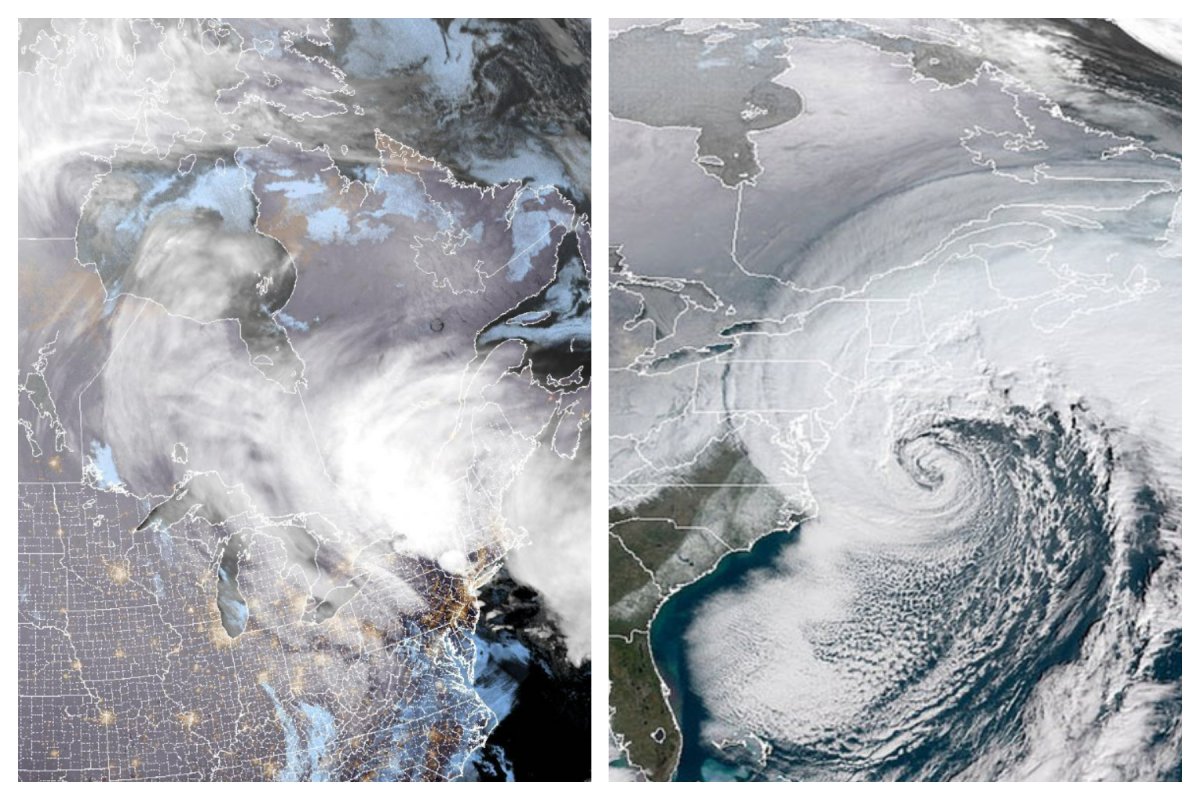Satellite imagery has captured how winter storm Elliott—a bracingly cold wave of freezing and windy weather ravaging the northern and Midwestern states before it turns into a bomb cyclone—has inched its way across the U.S.
The GOES-16/GOES-East satellite, which is operated by the National Oceanic and Atmospheric Administration (NOAA), is capturing live images of the U.S. as it orbits the Earth, and it reveals the storm's progression in some striking animation.
Earlier this week, a blast of cold air made its way south from Canada, developing into a major storm over the Great Lakes region on Wednesday and Thursday. As the storm strengthened, it brought frigid temperatures, powerful winds and large volumes of snow to the states nearby. As the pressure continues to drop, it may become a bomb cyclone.
On the NOAA GOES image viewer website, those wishing to watch this cyclone develop and move over the past six hours should select CONUS, Canada or a location in the GOES-East subsection on the page's left side. CONUS shows the entire U.S., while the Canada selection shows a large proportion of the northern U.S. and the Canadian border, which is where the storm has been raging, as seen in the video above.

The page will then show selections with names like GeoColor and Sandwich RGB. For a real-color view, stick with GeoColor, as the other views show the storm in various wavelengths of infrared light. When you click on "animation loops," the site will generate a short video with the images taken of that region over the past six hours. The storm is seen blowing northeast between the Great Lakes and the Atlantic.
It's about to be one of the most extreme weeks of Christmas weather ever.
— Colin McCarthy (@US_Stormwatch) December 19, 2022
An extreme arctic blast will punish hundreds of millions of Americans from Washington to Florida with record-freezing temperatures.
At the same time, a dangerous blizzard looks to hammer the Great Lakes. pic.twitter.com/ufDaBX7KPT
The National Weather Service has said that the storm is likely to develop into a bomb cyclone soon. Such cyclones are winter storms formed by cold air meeting warmer, wetter air, with large drops in atmospheric pressure.
"Bomb cyclones refer to a more exceptional type of extratropical—or midlatitude—cyclone that is associated with a rapid drop in pressure," Esther Mullens, a professor of atmospheric science at the University of Florida, previously told Newsweek. "The typical criteria is 24 millibars in 24 hours."
Current view from a Troopers car in Cheyenne, Wyoming. Current conditions outside of Cheyenne are -18 with zero visibility.
— James Spann (@spann) December 22, 2022
Video from Wyoming Highway Patrol pic.twitter.com/TTa7PsrSG6
Previously, spectacular bomb cyclone images have been captured moving across the country and show the true scale of these powerful storms. The GOES satellites took pictures in 2018 and 2019 of bomb cyclones battering the U.S. with brutal winter weather.
Several states have since been plunged into subzero temperatures and are facing harsh blizzard conditions. Air temperatures even reached as low as minus 36 degrees F in parts of central Montana on Thursday afternoon.
At least 2,600 flights into and out of the U.S. were canceled Thursday, and over 3,000 have been canceled so far on Friday, according to flight tracking site FlightAware.com.
Do you have a tip on a science story that Newsweek should be covering? Do you have a question about bomb cyclones? Let us know via science@newsweek.com.
Correction 01/03/2023 11:02 a.m. ET: This article was corrected to say NOAA operates the GOES-16 satellite.
Uncommon Knowledge
Newsweek is committed to challenging conventional wisdom and finding connections in the search for common ground.
Newsweek is committed to challenging conventional wisdom and finding connections in the search for common ground.
About the writer
Jess Thomson is a Newsweek Science Reporter based in London UK. Her focus is reporting on science, technology and healthcare. ... Read more
To read how Newsweek uses AI as a newsroom tool, Click here.






